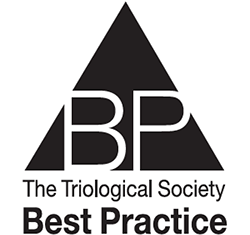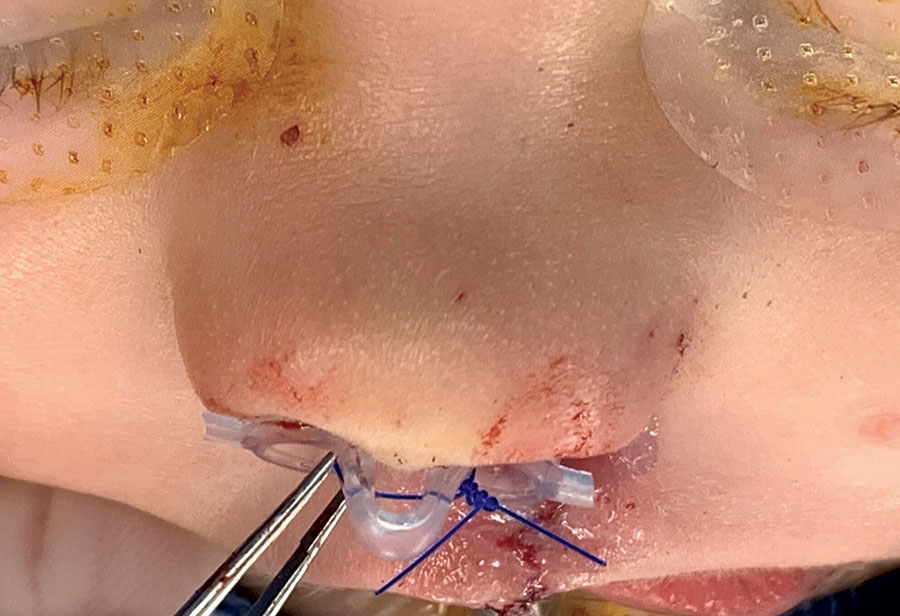 TRIO Best Practice articles are brief, structured reviews designed to provide the busy clinician with a handy outline and reference for day-to-day clinical decision making. The ENTtoday summaries below include the Background and Best Practice sections of the original article. To view the complete Laryngoscope articles free of charge, visit Laryngoscope.com.
TRIO Best Practice articles are brief, structured reviews designed to provide the busy clinician with a handy outline and reference for day-to-day clinical decision making. The ENTtoday summaries below include the Background and Best Practice sections of the original article. To view the complete Laryngoscope articles free of charge, visit Laryngoscope.com.
Explore This Issue
April 2025BACKGROUND

Figure 1: Intra-operative photograph of infant’s nose after cleft lip and nose repair with nasal conformers held by forceps and positioned by temporary suture fixation.
There is variability in surgeons’ preferences for how the cleft lip nasal deformity is treated as part of the primary cleft repair (cheilorhinoplasty), which includes no universally accepted protocol for nostril retainer stents. Some surgeons perform a primary rhinoplasty at the time of cleft lip repair, with little consensus in using open versus endonasal approaches, early septal repositioning, and degree of overcorrection in lower lateral cartilage repositioning.
Following primary cleft lip and nose repair, some relapse of the cleft nasal deformity is common due to cartilage memory and contraction. Surgeons who advocate for post-operative nasal stenting argue that the soft tissues can be conformed to the desired shape. Ideally, long-lasting aesthetic and functional cleft lip and nasal outcomes could be achieved with codified surgical choices with or without nasal stenting.
Due to the variance in the types of nasal stents (Fig. 1), duration of use, and surgical technique, there is an opportunity to outline the indications for nasal stents following primary lip and nose repair.
BEST PRACTICE
The evidence suggests that post-operative nasal stents are beneficial if used for three to six months by a hypothesized mechanism of hindering the contraction and regression of the surgically repositioned lower lateral cartilages. The advantages of stents must also be contrasted with the potential for parental stress in caring for the nasal stents, feeding difficulties with obstructed stents, and a small risk of complications, such as pressure-related skin injury. Although the duration of nasal stent use after primary cleft rhinoplasty was between three and six months in the literature reviewed, the partial benefit is likely gained from shorter stent durations, which the surgeon can consider in the context of the cleft lip nasal deformity severity, use of pre-operative nasoalveolar molding, and nasal overcorrection performed with primary rhinoplasty techniques.
Leave a Reply